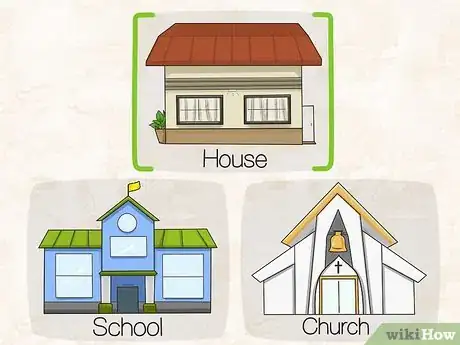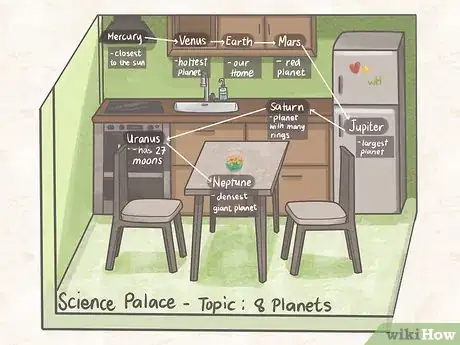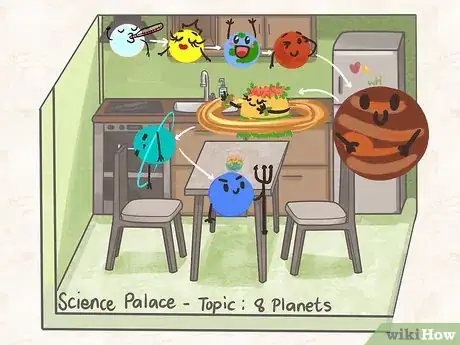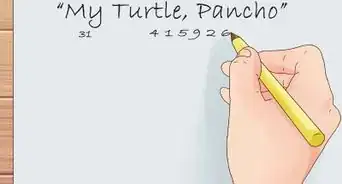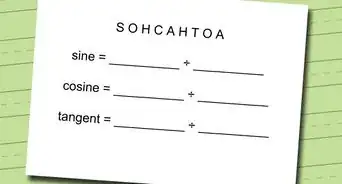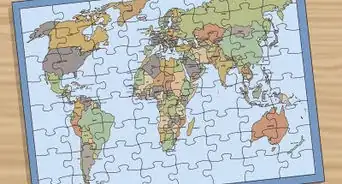This article was co-authored by wikiHow Staff. Our trained team of editors and researchers validate articles for accuracy and comprehensiveness. wikiHow's Content Management Team carefully monitors the work from our editorial staff to ensure that each article is backed by trusted research and meets our high quality standards.
There are 7 references cited in this article, which can be found at the bottom of the page.
wikiHow marks an article as reader-approved once it receives enough positive feedback. This article received 37 testimonials and 92% of readers who voted found it helpful, earning it our reader-approved status.
This article has been viewed 2,413,440 times.
Learn more...
One of the most useful memory aids was created thousands of years ago by the ancient Greeks. And the memory palace, a place in your mind where you can store information that you need to remember, is still relevant today. It's used not only by world record-holding memory champions but also by famous detective Sherlock Holmes. With a little planning and practice, you can build a memory palace, too.
Steps
Planning Your Palace
-
1Choose a place that can be easily visualized as the blueprint for your palace. A memory palace must be a place or route that you are incredibly familiar with, like your childhood home or even your daily commute to work. It can be as small as your closet or as large as your entire neighborhood. The important thing is that you’re able to visualize the place in your head without actually seeing it in real life.[1]
- The larger or more detailed the real place is, the more information you can store in the corresponding mental space.
- Other options for memory palace locations include school, church, work, a vacation spot you visit frequently, or a friend’s house.
-
2Walk through your palace to define a route. Decide how you’ll travel through the palace in your mind rather than just picturing a fixed place. For example, instead of just imagining your house, imagine how you’d walk through it. Do you enter through the front door? What hallway do you walk down? What rooms do you go to? If you need to remember things in a certain order, follow a specific route through your palace, both in the real world and in your mind.
- Beginning to practice your route now will make it easier to memorize later on, too.
Advertisement -
3Identify specific locations in the palace to store your information. Think about exactly what you’re going to be putting in your memory palace, whether it’s a number, name, or important dates you need to remember for an exam. You’ll store each piece of data in a separate location so you need to identify as many locations as you have data. Each storage spot needs to be unique so that you don’t accidentally mistake one spot for another.[2]
- If your palace itself is a route, like your drive to work, choose landmarks along the way. Some examples include your neighbor’s house, a traffic light, a statue, or a building.
- If your palace is a structure, consider separating information in different rooms. Then, within each room, identify smaller locations like paintings, pieces of furniture, or decor.
-
4Practice visualizing your finished palace by physically drawing it. On a piece of paper, sketch your memory palace or, if it’s a route, map it out. Mark the landmarks or storage locations you’ve chosen. Close your eyes and try visualizing the palace in your head. Then check your mental image against the drawing to make sure you have remembered every location and that you’ve put them in the correct order.[3]
- Picture the landmarks in as much detail as possible. Make sure your mental image includes their colors, sizes, smells, and any other defining characteristics.
- If your mental image doesn’t match your drawing, review the drawing a few more times and then try again. Repeat until you can visualize it perfectly.
- Another option to practice visualizing your palace is to recite it to a friend. Walk them through the route verbally while they look at the map you drew to compare.
Filling Your Palace with Information
-
1Place important information in small chunks around the palace. Put a manageable amount of information in each spot. Don’t put too much information in any one place or it will be overwhelming for your brain to try to remember it all. If certain things must be kept separate from others, put them in distinctly different places.
- If necessary, place things along your route in the order in which you need to remember them.
- If your palace is your house, and you are trying to remember a speech, you might place the first few sentences on your doormat and the next few in the keyhole of your door.
- Put your best friend's address in the mailbox outside or on an envelope on the kitchen table. Put their phone number on the couch where you always take their phone calls.
- If you're trying to remember U.S. presidents in order, make the washing machine George Washington. Walk further into the laundry room and find a pair of long johns, which represent John Adams.
-
2Use simple images to symbolize complicated phrases or numbers. You don’t need to put a whole string of words or numbers in a given location to be able to remember it. All you need to store in each spot is something that will jog your memory and lead you to the actual idea you’re trying to remember.[4] For example, if you’re trying to remember a ship, picture an anchor on your couch. If the ship is the U.S.S. Wisconsin, picture the anchor made out of cheese.
- Don’t make your symbols too abstract. If they don't have an obvious correlation to what you’re memorizing, it defeats the purpose. You won’t be able to make the connection between the symbol and the information.
- Symbols are shorthand and more effective than picturing the actual thing you are trying to remember.
-
3Add people, emotional triggers, or bizarre images to remember data. The images you put in your palace should be as memorable as possible. Generally, images will be more memorable if they are out of the ordinary or attached to some strong emotion or personal experience. You might picture your mom placing her Social Security number on the kitchen table or an adorable puppy eating from a bowl that has your vocabulary test words on it.
- Another example uses the number 124, which isn’t memorable. But an image of a spear shaped like the number 1 going through a swan (which looks like the number 2) and splitting the swan into 4 pieces is. It’s disturbing, but that’s what makes it stick in your mind.
- You don't have to use only positive images. Negative emotions or images, like including a politician you hate, are just as strong.
-
4Incorporate other mnemonics to recall longer strings of information. Create a simple mnemonic by forming an acronym using the first letters of the words in a phrase or make a little rhyme containing the information you’re trying to remember. Then insert these new shortened pieces of data into your memory palace instead of the longer piece.[5]
- For instance, say you need to recall the order of notes on the lines of the treble clef (EGBDF). Imagine a little boy eating a piece of chocolate fudge, which would evoke the first-letter mnemonic “Every Good Boy Deserves Fudge."
- A rhyming mnemonic is, “In 1492, Columbus sailed the ocean blue.” Envision Columbus holding a blue sailboat toy in your living room.
Using Memory Palaces
-
1Spend at least 15 minutes exploring your palace every day. The more you walk through and spend time in your palace, the more easily you will recall its contents on demand. You want the visualization to feel effortless and natural. Try to walk through the entire route a couple of times or block out a chunk of time each day to visualize the palace from start to finish.[6]
- For example, see James Joyce sitting on your toilet as if he belongs there and really is an integral part of your bathroom décor instead of an imagined image. This helps you remember that James Joyce was the author known for his toilet humor.
- The best part is you can practice this anywhere, anytime. All you have to do is close your eyes.
-
2Recall information by walking through your palace or looking around it. Once you have memorized the contents of your palace remember them simply by following the route or visualizing a room. With practice you will be able to start anywhere in your palace or along your route to recall a specific piece of information.[7]
- If you need to remember that your girlfriend’s birthday is March 16, simply go into your bedroom and see the soldiers “marching" on the bed to the tune of the 80s cult classic “Sixteen Candles."
-
3Clean up your memory palace when you need to update data. A memory palace can be reused over and over again. Simply replace the existing contents with new information. After a few practice runs, you’ll soon forget the old data and only remember the new data in its place.[8]
- If your palace is becoming too large or contains information you no longer need, remove that data from the route.
-
4Build new palaces for different topics and information. If you have something new you’d like to commit to memory, but you don’t want to erase your current memory palace, simply build a new one. File the old palace away and start the process all over again, choosing a different place to use as your palace. Memory palaces will last as long as you want them to once they’re stored in your brain.[9]
- There’s no limit to how many memory palaces you can build.
- For example, you might have your house store the names of all the U.S. presidents. Then, your walk to work contains the phone numbers of your friends and family. And your office itself has the contents of the speech you’re giving tomorrow.
Community Q&A
-
QuestionCan I have multiple mind palaces that have a few similar items in them?
 Community AnswerOf course, your mind palace is designed and created by you, so you decide what to put in it. Just be careful if you decide to put similar items in different mind palaces, because you might get confused or mixed up.
Community AnswerOf course, your mind palace is designed and created by you, so you decide what to put in it. Just be careful if you decide to put similar items in different mind palaces, because you might get confused or mixed up. -
QuestionHow can I learn to remember a speech requiring 950 words?
 Community AnswerDon't memorise every word; instead, memorise the key points. Then walk around your memory palace in the specific order of the things in your speech, so that you go through front door and see the first thing, etc.
Community AnswerDon't memorise every word; instead, memorise the key points. Then walk around your memory palace in the specific order of the things in your speech, so that you go through front door and see the first thing, etc. -
QuestionCan I remember everything I want, or is there a limit to memory?
 Community AnswerMost people forget things from time to time, but if you keep reminding yourself of details, you can remember as much as you want.
Community AnswerMost people forget things from time to time, but if you keep reminding yourself of details, you can remember as much as you want.
References
- ↑ https://www.smithsonianmag.com/arts-culture/secrets-sherlocks-mind-palace-180949567/
- ↑ https://www.smithsonianmag.com/arts-culture/secrets-sherlocks-mind-palace-180949567/
- ↑ https://www.sciencedaily.com/releases/2016/04/160421133821.htm
- ↑ https://www.psychologytoday.com/us/blog/get-psyched/201207/learning-through-visuals
- ↑ http://theweek.com/articles/465649/10-superhelpful-mnemonic-tricks
- ↑ https://www.cnbc.com/2018/03/07/study-this-ancient-technique-can-dramatically-improve-your-memory.html
- ↑ https://www.cnbc.com/2018/03/07/study-this-ancient-technique-can-dramatically-improve-your-memory.html
- ↑ https://www.theverge.com/2017/3/16/14950798/memory-palace-method-of-loci-brain-fmri-activity-neuroscience
- ↑ http://theweek.com/articles/448876/how-develop-photographic-memory-4-easy-steps
About This Article
To build a memory palace, first imagine a real place that you’re familiar with, like your bedroom or your drive to work. As you imagine walking or driving through the location, pick objects or landmarks to represent information. For instance, if you’re memorizing a speech, then your bedroom door might store the first few sentences, your desk might be the next segment, and so on. Commit your palace to memory by drawing it on paper, making notes for the locations of your important information. Keep reading to learn how to use symbols and mnemonic devices in your memory palace!
